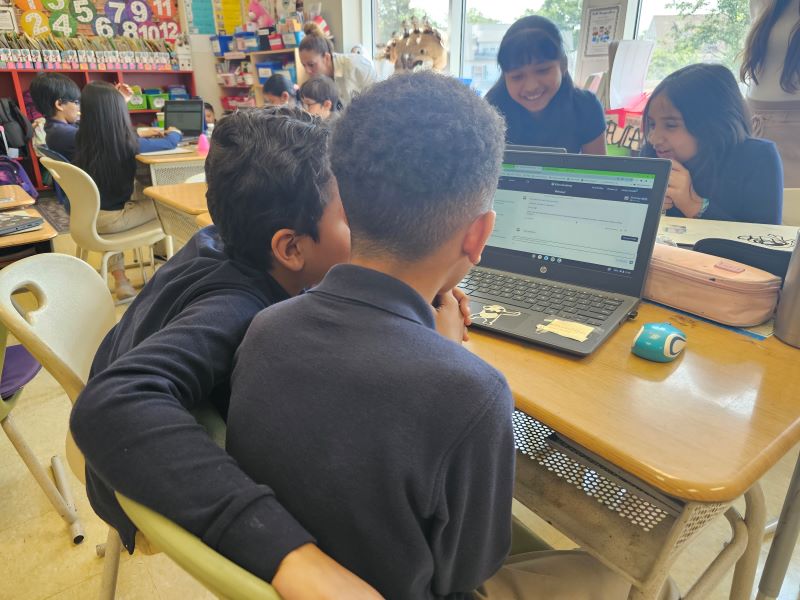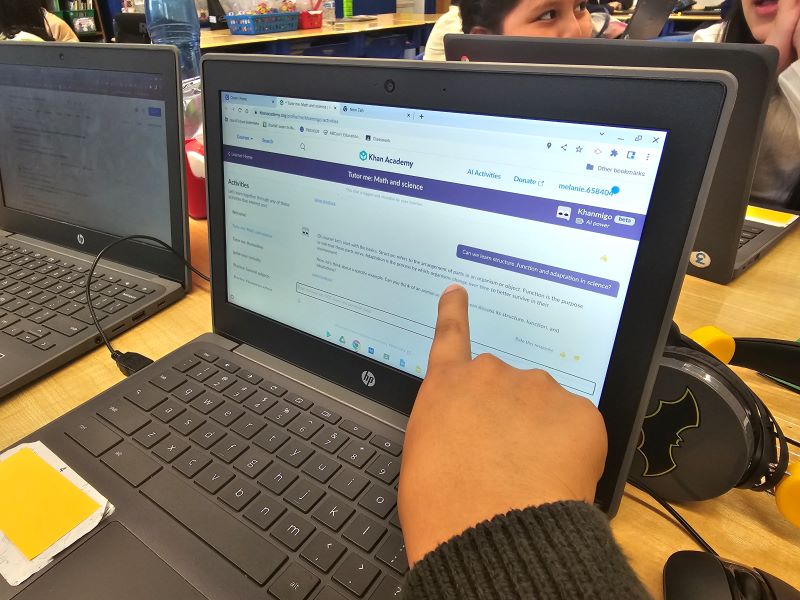In Oklahoma, that’s a reality, thanks to a partnership between Project ECHO and Khan Academy that’s bringing an artificial intelligence teaching assistant called “Khanmigo” to classrooms in participating schools.
The project started as a pilot with four school districts. Prior to using Khanmigo, teachers participated in regular online training through Project ECHO so that they were prepared to put Khanmigo into action in their classrooms. In addition to showing teachers how they could use Khanmigo to plan lessons, monitor student progress in real time, and review classroom and homework assignments more efficiently, the trainings addressed common fears about AI, including whether students would use it to cheat. (Khanmigo doesn’t allow cheating! It helps teachers identify plagiarism and encourages students to develop critical thinking skills as they complete their work.)
Led by Khan Academy experts in partnership with Oklahoma State University faculty, the ECHO trainings continue regularly throughout the school year so that teachers receive updates as they learn from each other’s experiences with Khanmigo.
“This was the easiest implementation of a new technology that I’ve ever done,” says Tyler Elders, an instructional coach at Enid High School in Enid, Okla. “Our teachers really hit the ground running with it.” The ECHO training, he adds, has been “absolutely” essential to the program’s success. “Without the training, I would not have had a clue as to how to roll this out for my kids.”
Filling in the Gaps
In the classroom, each student has access to Khanmigo through their laptops. Students interact with the AI to do their classroom assignments while their teachers monitor their progress in real time, receiving messages from Khanmigo on how well each student has understood the lesson and where they are having problems.
“Some of my kids have holes in their algebra skills,” says Stephanie Garis, who teaches math at Enid High. “Khanmigo helps me fill in those holes.” Other teachers, she notes, have used Khanmigo to help “frontload” subjects, such as triangles.
At Enid, which was one of the pilot schools, high school educators started using Khanmigo for geometry. After one semester, there were no students failing in that class. School officials are still analyzing the data, but they believe that overall performance has improved as well. They are now using Khanmigo for all math classes at Enid High.
Critical Thinking Required
Garis says that Khanmigo forces students to think—which they’re not always happy about when they’re looking for quick answers. It also makes learning relatable by asking students about themselves. If a student likes sports, the AI will frame math questions using sports examples. It doesn’t provide easy answers; instead, it probes where students are having difficulty and guides them to find the solutions themselves.
Elders notes that Khanmigo is especially helpful for teachers with large classrooms. “For modern-day teachers, one of the biggest challenges is meeting the needs of every kid in the classroom.” Khanmigo, he says, helps teachers overcome that challenge, allowing them to spend more time with individual students and in small groups.
Garis admits that she was “a little nervous” when introduced to the program. “But, like anything new, you have to learn,” she says. The training she received from ECHO helped her get past her fears and put Khanmigo to good use in her classroom.
For more information about the ECHO Programs at Oklahoma State University, including the education ones, visit their website. Or to learn more about Khanmigo, watch the TED Talk: “How AI could save (not destroy) education” by Sal Khan.
Featured Image: Two students use Khan Academy with Khanmigo. Stock imagery provided by the Khan Academy, February 2025.


